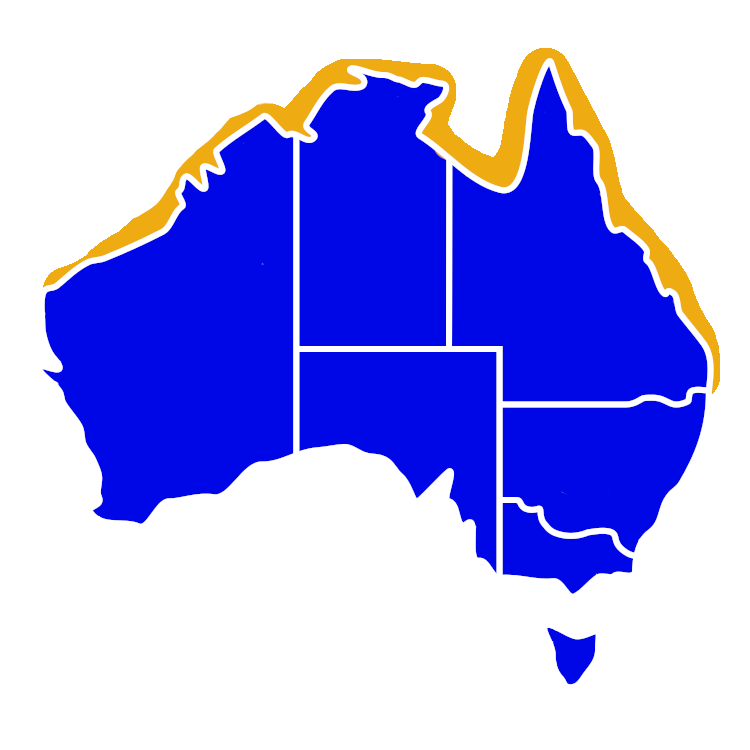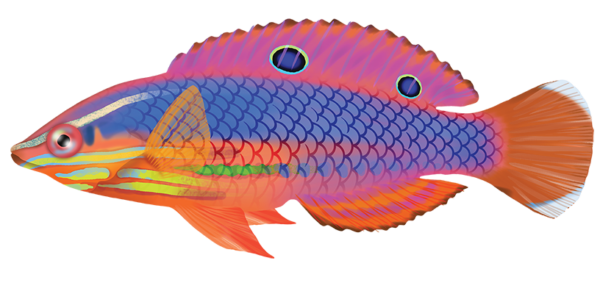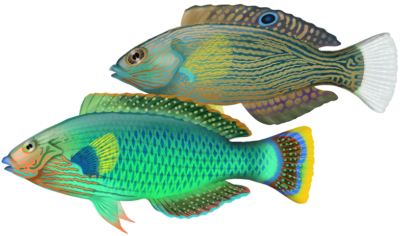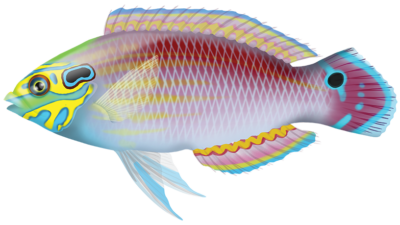Quick Facts
Distribution

Interesting Info
- False-eyed Wrasses are found in various locations throughout Australia, including Western Australia, the Northern Territory, to the Great Barrier Reef, Coral Sea, and Lord Howe Island.
- Females are pinkish-orange with two black spots on their dorsal fin, while males are greenish-blue with a black stripe on their sides and a yellow stripe on their dorsal fin.
- False-eyed Wrasses are known for their distinctive markings, which include a pair of black spots on their dorsal fin, giving the impression of “false eyes.” This is thought to be a defence mechanism to deter predators.
- False-eyed Wrasses feed primarily on small crustaceans, worms, and other invertebrates that they find on or near the coral reefs.
- These fish are hermaphroditic, which means they change sex from female to male.
- False-eyed Wrasse spawn during the day in groups of several females with a dominant male. The male will fertilise the eggs as they are released into the water column.
- Estimated lifespan is up to 6 years.
Species Interaction
Aquarium, Snorkeling & Diving
False-eyed Wrasses are not the easiest fish to keep in an aquarium, and are best suited for experienced hobbyists. These fish require a mature and stable reef aquarium environment with plenty of hiding spots, live rock, and coral formations. A sand substrate is also recommended. They are relatively easy to observe in the wild, making them a popular fish for snorkelers and divers to look out for when exploring coral reefs in Australia. Their unique marking of “false eyes” on their dorsal fins, make them easily to identify.
Scientific Classification
Kingdom: Animalia
Phylum: Chordata
Class: Actinopterygii
Order: Perciformes
Family: Labridae
Genus: Halichoeres
Species: Halichoeres Biocellatus
Conservation Status
The False-eyed Wrasse is not currently classified as threatened by the IUCN, and is listed as “Least Concern”. In Australia they are not considered to be threatened.
False-eyed Wrasse
As Aquarium Fish
Care Level: Difficult
Temperament: Peaceful
Diet: Carnivore
Reef Compatible: Yes
Minimum Tank Size: 40 gallons
Recreational Viewing
- Snorkeling & Scuba
Finding: Easy
Temperament: Peaceful
Location: Inner Reef, Outer Reef, Lagoon
Danger: None





